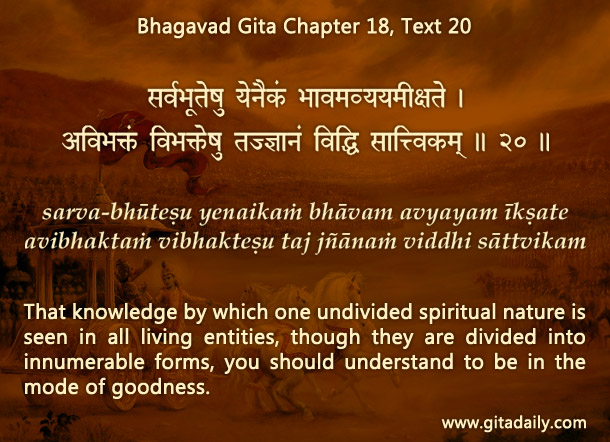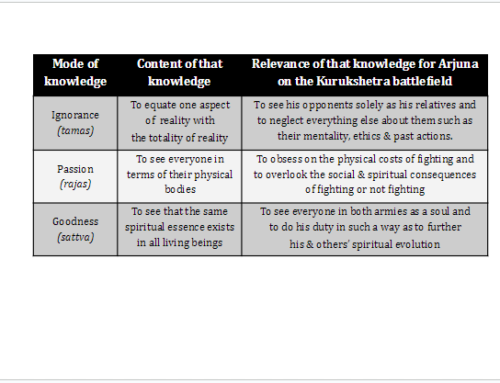Racial, religious and other forms of sectarian violence rend the world today. Such violence may have complex social, economic, cultural and political causes, but underlying them all is a spiritual blindness – our inability to see beyond our bodily differences to our spiritual commonality.
The Gita, though spoken thousands of years ago, offers a superior alternative to the contemporary doctrine of secular humanism
The Bhagavad-gita (02.22) conveys that beneath our bodies that are like dresses we all are spiritual souls. The Gita (18.20) further indicates that by cultivating the mode of goodness, which essentially means living in the light of wisdom, we can see the common spiritual substance underlying the varying material forms of different people. In fact, this Gita verse encompasses even the non-human world by its use of the inclusive word sarva-bhuteshu (all living beings), implying that our spiritual commonality extends to all living beings. Thus, the Gita, though spoken thousands of years ago, offers a superior alternative to the contemporary doctrine of secular humanism. Though this doctrine is much touted for its unifying potential, its unifying umbrella is limited to human beings. Additionally, Gita wisdom complements the emergent animal rights movement with philosophical justification – animals have a right to live because they too are souls like us.
As uplifting and unifying as this vision is, it is still the Gita’s penultimate vision. It arises in goodness, which is a pathway to transcendence. The ultimate transcendental vision is delineated in the Gita (04.35), wherein we see all living beings as connected to the ultimate spiritual reality, God, Krishna.
The most complete connection comes through love – love for Krishna and for all living beings, who belong to the one divine family. To the extent we embrace the purpose of expressing and experiencing spiritual love, to that extent we will relish higher happiness and learn to resolve or live with our differences, seeing them as ultimately inconsequential.  Explanation of article:
Explanation of article:
https://www.youtube.com/watch?v=_B7y851aJrs


Hare Krishna dear prabhuji
PAMHO. AGTSP.Spell-bounding article. I would request to submit this to the speaking tree in the times of india. I remember vaguely a story from Mahabharata where Krishna tests a Brahmin by being disguised as a lower caste person. So any hatred or prejudice is to be transcended ultimately. Another related problem we are seeing in the world is the tendency to form communities and sects and have the attitude ‘my sect is superior or the chosen one. Other sects are inferior or sinful’. This is then taken to the extreme and transforms into violence. All the verses You have quoted address these problems.
Ys
subash
Ys
subash
Sent to Speaking Tree – thanks for the suggestion.
Have addressed the issue of religious exclusivity here:
http://www.thespiritualscientist.com/2012/01/why-do-people-who-follow-a-religion-often-claim-that-their-path-is-the-only-way/
and here:
http://www.thespiritualscientist.com/2012/02/why-does-every-religion-claim-that-it-is-the-only-way-doesnt-this-lead-to-violence/
ys
ccdas